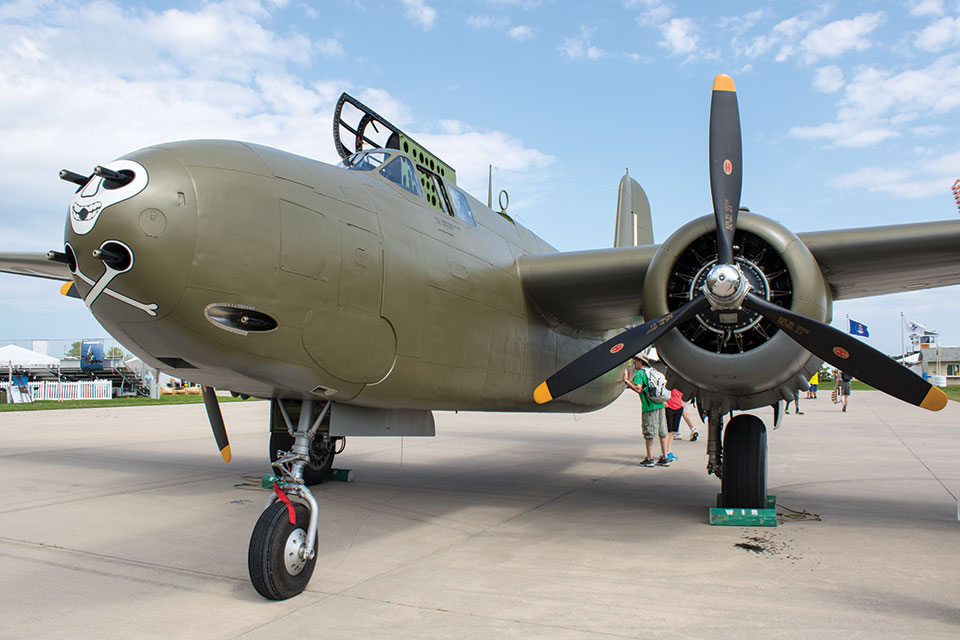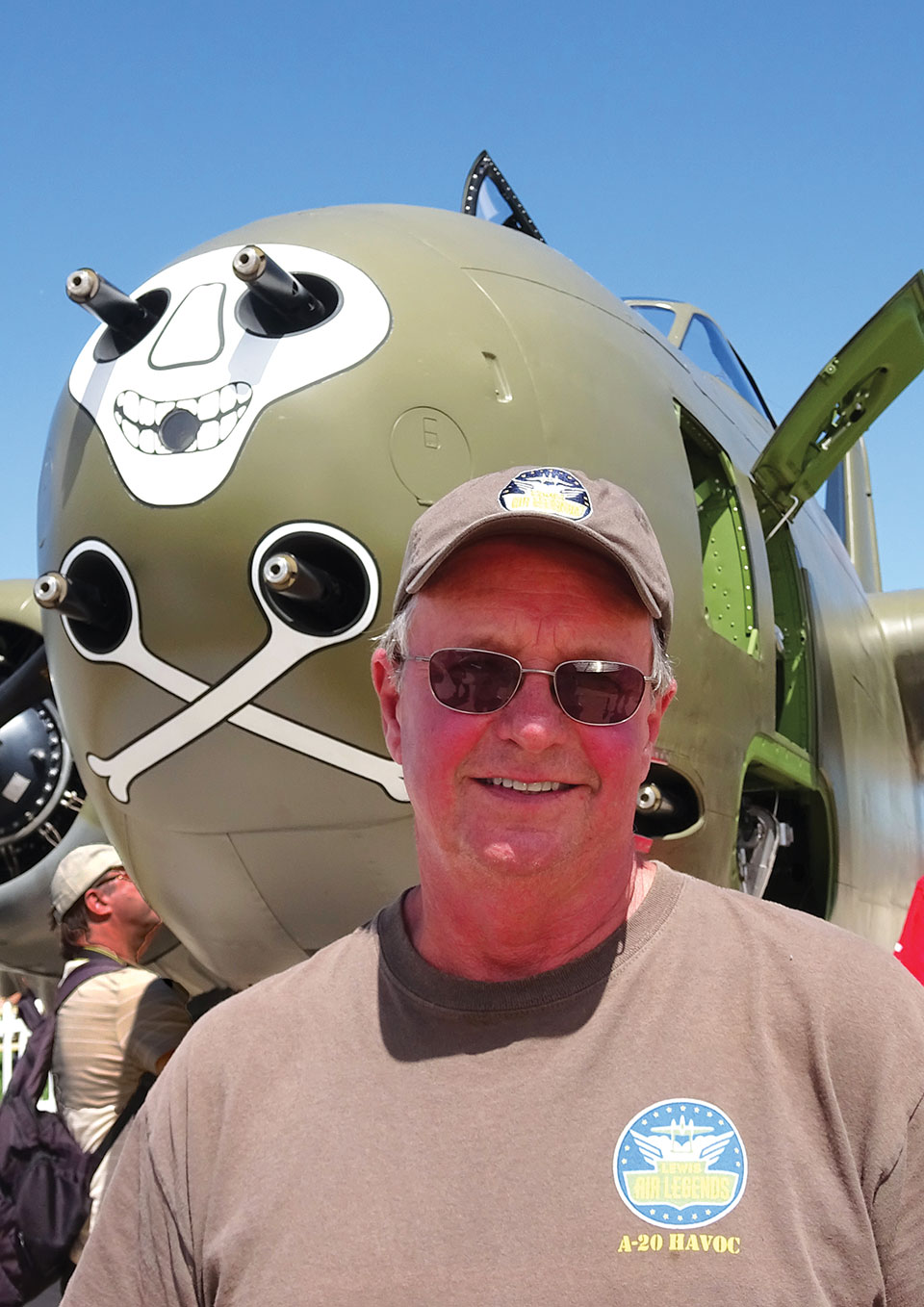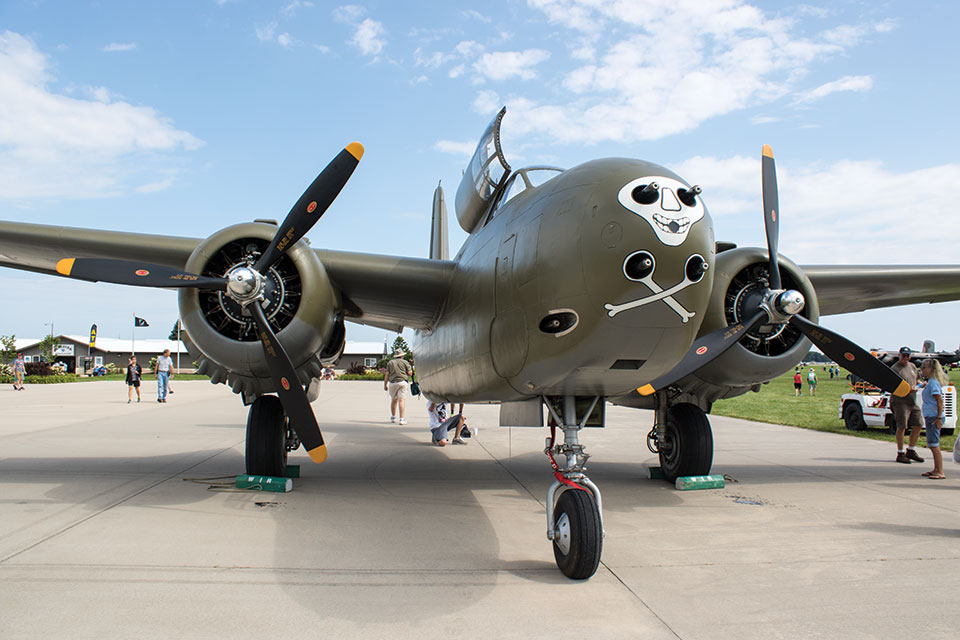Havoc’s Hallowed History
Flying Douglas A-20 showcases 1930s military aircraft design, flight qualities
By Frederick A. Johnsen
July 24, 2017 - The flying Douglas A-20 Havoc attack bomber at EAA AirVenture 2017 gives visitors a rare glimpse back over the decades to see the design rationale Douglas designers embraced in the late 1930s. Back then it was all about rounded wings and tail surfaces, curvy sculpted fuselage contours, and creating a multiengine attack bomber when so many predecessors were only single-engine machines. Skilled designer Ed Heinemann is credited with the basic A-20 design rationale.
The A-20’s narrow fuselage has a single-seat cockpit for the pilot, leading a crew totaling two or three. The G-model Havoc at AirVenture 2017 sports a Martin top turret and a solid nose with six .50-caliber machine guns. It has a long bomb bay that carries bombs in a single level on shackles running the length of the bay.
The A-20 was fast — in excess of 300 miles per hour — and maneuverable. Pilots liked it, and used its speed and nimble characteristics to put bombs on target and quickly evade destruction. The U.S. Army Air Forces used A-20s globally during World War II, from North Africa to Western Europe and the Pacific.
Texan Rod Lewis bought the A-20 Havoc from a museum where it had not flown for many years, and where its restoration was only cosmetic. From there, it spent 11 years in the shops of Aero Trader in Chino, California, where Carl Scholl, Tony Ritzman, and their team returned the Havoc to its wartime bomber configuration.
The Havoc’s first post-restoration flight in 2016 was witnessed by three wartime veteran A-20 pilots. The pilot for that flight, and all subsequent sorties, is Stew Dawson, one of Rod’s handful of go-to, expert warbird pilots. Dawson said, “It’s really a great flying airplane. It’s better than a B-25. It’s well-balanced.”
When asked how he prepared for his first flight in the single-cockpit bomber, Dawson replied, “Read the book and got in.”
Carl Scholl talked about his restoration of the A-20. His company has been stockpiling warbird parts — especially bomber parts — for decades, so he had most of the exotic hardware needed to bring this bomber back to its military configuration, including the Martin top turret. “We had it all,” Carl said. Some pieces came from the warbird collection of David Tallichet, who brought some A-20 carcasses to Chino from New Guinea. Others came courtesy of Kermit Weeks, who has a nonflying A-20.
But Carl says the scarcity of A-20s pretty much means, “It’s going to be the only one that’s going to be flying for years.”
Rod spoke of his passion for collecting historic aircraft – 37 total, now. At first, his association with warbirds put him in contact with heroic pilots and airmen from the past. Rod saw the impact they could have in teaching young people about freedom, and he said, “That was an important factor” in his motivation to create Lewis Air Legends.



